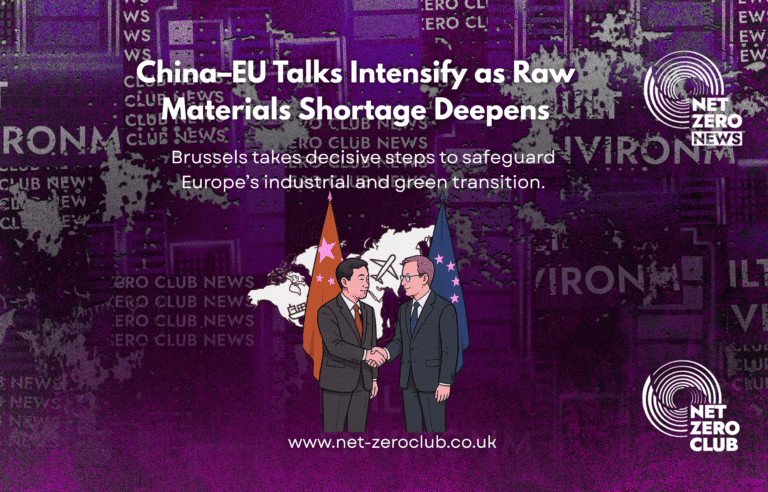Trump Seeks Trade Deal as Xi Unveils New Strategy

Hello, Champions of Net Zero!
In the intricate tapestry of global trade, the threads woven between the United States and China have always been particularly prominent. As two of the largest economies in the world, their interactions can set the tone for international relations and trade dynamics. Recently, these interactions have taken an unexpected turn, as former US President Donald Trump sought to establish a trade deal with China, only to be met with a new and complex challenge from Chinese President Xi Jinping.
Trump’s tenure was marked by a fierce focus on reshaping international trade agreements, particularly with China. His administration’s approach often revolved around the idea of ‘America First’, aiming to reduce trade deficits and bring manufacturing jobs back to the U.S. This nationalist sentiment resonated strongly with many Americans who felt left behind by globalisation. However, in the intricate dance of diplomacy, Xi has taken steps that could reshape not just trade relations, but also pose significant challenges to U.S. interests.
In recent developments, President Xi has initiated a bold strategy that seems to open a new front in the ongoing economic rivalry between these two superpowers. Rather than simply engaging in negotiations to settle trade disputes, Xi’s administration has signalled a shift towards strengthening ties with other nations, particularly those in the Asia-Pacific region and beyond. This shift could potentially redefine the balance of power in global trade.
One of the key elements of Xi’s strategy appears to be an emphasis on regional cooperation and partnerships. In an era where geopolitical tensions are high, particularly regarding trade, China’s initiative to strengthen alliances with neighbouring countries is a calculated move. By fostering these relationships, China is positioning itself as a leader in the region, while simultaneously creating an alternative to the Western-centric trade frameworks that have dominated for decades.
For instance, Xi has been actively promoting initiatives such as the Belt and Road Initiative (BRI), which seeks to enhance global trade and stimulate economic growth across Asia and beyond through infrastructure investments. This ambitious project not only helps China secure vital trade routes but also allows it to strengthen its influence over participating countries. As nations increasingly turn towards China for investment and trade partnerships, the implications for U.S.-China relations could be profound.
As Trump and his administration grapple with these developments, questions arise about the future of U.S. trade policy. Will the United States adjust its strategy in response to China’s growing influence? Will there be a renewed focus on forging alliances with other nations to counterbalance China’s reach? These questions underscore the complexity of global trade dynamics and the need for strategic foresight.
Moreover, the implications of Xi’s new front extend beyond mere trade. The geopolitical landscape is shifting, and as nations realign their partnerships, the U.S. may find itself at a crossroads. The challenge lies not only in negotiating better trade terms but also in addressing broader concerns related to security, technology, and environmental issues—areas that are becoming increasingly intertwined with trade policy.
For instance, as climate change continues to pose a significant threat to global stability, the intersection of trade and environmental policy cannot be overlooked. The Net Zero movement, which advocates for reducing carbon emissions and promoting sustainability, is gaining traction worldwide. Countries are recognising that economic growth cannot come at the expense of the planet. This presents an opportunity for the U.S. to redefine its trade relations, integrating sustainability into the core of its foreign policy.
Furthermore, as nations pivot towards greener technologies and practices, the competition for resources, technology, and innovation is intensifying. China has made significant investments in renewable energy and sustainable practices, positioning itself as a leader in the green transition. The U.S. must consider how its trade policies can support not only economic recovery but also a sustainable future.
As we navigate this complex landscape, it is crucial for policymakers, businesses, and citizens alike to engage in informed discussions about the future of trade in a rapidly changing world. The challenges posed by Xi’s new strategies require a thoughtful and nuanced approach—one that balances economic interests with environmental stewardship and global cooperation.
In conclusion, the ongoing saga of U.S.-China trade relations is far from over. As both nations grapple with their respective goals and strategies, the outcomes will have far-reaching implications for the global economy, international relations, and the fight against climate change. As the Net Zero News community, we must remain vigilant and informed, advocating for policies that promote sustainability and equitable growth in an interconnected world.
As we continue to monitor the developments in this arena, let us engage in conversations that not only focus on trade but also incorporate the pressing need for a sustainable future. Together, we can champion a new era of collaboration that prioritises both economic prosperity and environmental responsibility.
Stay tuned for more updates and insights as we navigate the evolving landscape of global trade and sustainability. Your engagement and advocacy are vital in driving the change we wish to see in the world.

 Got net-zero news, project updates, or product launches to share?
Got net-zero news, project updates, or product launches to share? 
